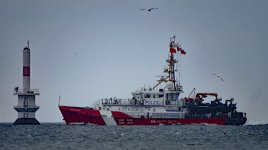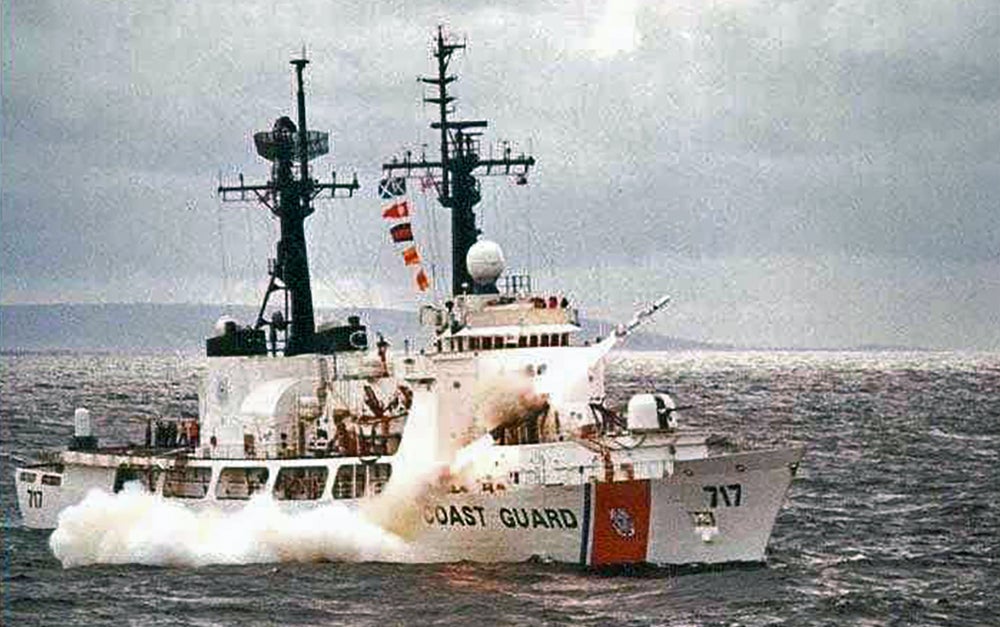OK, maybe I'm just being picky or maybe it's my morning to actually pick the fly-sh!t out of the pepper, but words matter.
The American armed forces are
Unified, the Australian Armed Forces are
Unified, the British Armed Forces are
Unified, the Canadian Armed Forces are
Unified, the Danish Armed Forces are
Unified and ... well you get the picture.
Unified armed forces have
unity of command ~ normally one defence minister and one Chief of the Defence Staff or Chairman of the Chiefs of Staff or something like that who work in one (usually
Integrated) defence HQ.
The Americans extend unification down below HQ level. In their system, major combat commands are also
Unified. Central Command, for example, the one with which many of you are very familiar, is
Unified. One commander, with an
Integrated HQ, commands separate naval, land and air forces.
The Canadian Forces
used to be fully
Integrated. At one time, in the 1960s and early 1970s, a command, like Maritime Command, had its own fully
integrated air component ~ the piots who flew shipborne aircraft saw themselves as Navy officers, first, while the ones who flew Maritime Command's big, multi-engine long-range patrol aircraft saw themselves as Air Force officers who flew as part of a
unified force. The colour of their flight suits didn't much matter. That all changed in 1975 with an act of monumentally stupid policy vandalism which was necessitated by the fact that Navy admirals and Army generals always failed to adequately plan for and support the organic air elements of their
unified commands. Given a choice between, say, two squadrons of
Harriers to replace his clapped-out CF-5 or 12 vs 13 battalions of infantry the Army generals could always be counted on to choose the cap badge over the combat power.
Of course, the CF remains
integrated at levels that no other armed force has ever emulated. Medics and cooks and computer techs are all "
purple," which is how we define
integrated.
The US explored
integration in the 1950s. President Eisenhower, I believe, was briefed on the notion and shot it down. He wanted
unification and while he understood the USMC's desire to have a high degree of
integration, he opposed large scale
integration. (There were some exceptions, the US Defense Communications Agency, for example, was an
integrated and
unified command ~ there were Army, Navy and USAF units but there were also, a few fully
integrated units where sailors, soldiers and air force members served side-by-side, albeit not in the same uniform.
The US Marines fought hard, then and later, to keep their own, organic air power ~ their choice of their
Harrier, a very inflexible aircraft, in their own, organic (
integrated) USMC squadrons was because they had learned, the hard way, that they could not rely on Navy or Air Force support when they needed it most. Ike agreed with them, as did later president and defence chiefs.
I was told, by a source I trust absolutely, that Paul Hellyer's team was briefed, by the US, in the very early 1960s and were told:
Yes, to Unification 
but
No, to Integration 
. But, Mr Hellyer and his team were being driven by other (political and fiscal) concerns and they went for both. Initially, as I said, the
unification extended down through commands and formations and even to base level. But that ended and we now have a strange mix of single service force generation commands and a
unified force employment command but our force is still i
ntegrated, despite having an RCN, Canadian Army ad RCAF.
Anyway, the CF is both
integrated and
unified, but unified means e.g. NDHQ, the CDS and CFJOC, while integrated means thigs like
purple trades.
Rant ends; thank you for your patience; and now back to your regularly scheduled programming.





